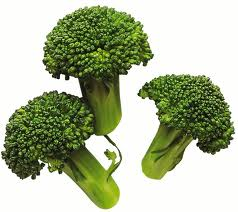The Senate passed its version of the farm bill. Now what?
It’s difficult to know what to say about a 1010-page bill that affects literally hundreds of programs, some big, some small, at such astronomical cost—an expected $97 billion per year. The bill is so big and so complex that it is unreasonable to expect legislators to understand it well enough to vote on it intelligently. Think of it as a prime example of special interests in action.
I’ve been collecting e-mailed responses from various groups. From these, it’s seems that the food movement scored a few wins along with plenty of losses.
First the wins. The United Fresh produce association is happy that the bill provides for:
- Specialty Crop Block Grants funded at $70 million per year
- Specialty Crop Research Initiative funded at $25 million in FY13; $30 million in FY14-15; $65 million in FY16; $50 million in FY17
- Plant Pest and Disease Program funded at $60 million in FY13-16 and $65 million in FY17
- Market Access Program and Technical Assistance for Specialty Crops fully funded at 2008 Farm Bill levels
- Fresh Fruit and Vegetable Program fully funded at 2008 Farm Bill levels
- Hunger-Free Communities Grant Program for fruit and vegetable SNAP incentives
- Farmers Market and Local Food Promotion Program
- Section 32 specialty crop purchases funded at 2008 Farm Bill levels
- DoD Fresh program fully funded at $50 million per year consistent with 2008 levels
Oxfam likes two things:
- It converts the 2008 pilot program to study the effectiveness of purchasing food aid locally and regionally to a full program funded at $40 million per year.
- It tries to reduce dumping of food aid on developing country markets.
Everyone else is mixed or skeptical:
- From Food and Water Watch: “Today, the U.S. Senate passed a farm bill that left the largest agribusiness and food processing companies firmly in control of America’s food system.”
- From the National Sustainable Agriculture Coalition: “While the bill includes historic commodity payment limit reforms and renewed investments in a variety of sustainable farm and food programs…[it] would benefit greatly from more agriculture reform, a greater local and regional food focus, and a much greater commitment to economic development and jobs…We are also disappointed with the $3.7 billion cut to conservation programs on working farms and ranches.”
- From the Environmental Working Group: “While we do not support this bill, we applaud the provisions that require farmers who receive crop insurance subsidies to carry out basic environmental protections on their farms and to reduce insurance subsidies for the largest and most successful agribusinesses.”
The debates over the farm bill hold some interesting lessons.
- The historic “logrolling” alliance between rural states favoring commodity support and urban states protecting food assistance programs (SNAP, food stamps) may soon come to an end. Senator Ron Johnson’s (Rep-WI) motion to separate SNAP benefits from farm supports was allowed four minutes of discussion. It failed on a vote of 59 to 40 (all Republicans). Forty? That seems like a lot.
- Labeling of genetically engineered foods remains an issue in American politics and not likely to go away. The Senate voted down an amendment to allow states to decide for themselves whether to label such foods. How will this affect the California “lets label it” initiative?
- Crop insurance will be the new focus of consumer advocacy. As Politico puts it, “the bill reflects a major shift of resources to crop insurance, which emerges as a new political powerhouse for agriculture — and what’s left of the safety net promised farmers. Midwest corn and soybean producers — riding high with good prices and a federal ethanol mandate — helped drive this change. But the result is a real and lasting split with Southern rice, peanuts and wheat growers reflected in the final vote.”
- The food movement has to get its act together. Ken Cook of the Environmental Working Group said “When conservationists stood our ground and fought, we won against the supposedly invincible crop insurance industry. Too many in the conservation community didn’t fight at all…As a consequence, conservation funding took the largest proportionate hit in this bill. For the “food movement”, the Senate farm bill has been another, rather sobering reminder that until we develop political muscle to match our passion for a sustainable food system, we’ll continue to see billions of dollars misspent on industrial agriculture.”
This is a call to action. The House is about to take up its version in the coming weeks. Advocates: get to work!



